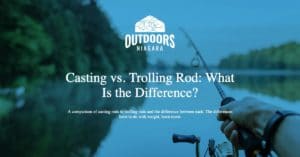|
Was there a true blue pike, or,
Today’s findings are in conflict Records I’m “We’ve
IS THERE/WAS THERE A BLUE PIKE? YOU
|
|
|
Here
is an example of something you will find on our website and nowhere
else.
“Protective
measures already taken: In 1969, a pair of Lake Erie Stizostedion,
believed to be blue pike, were spawned at the Pennsylvania
Fish Commission’s Linesville Fish Culture Station. About 9,000
of the fry were transferred to Gavins Point National Fish
Hatchery at Yankton, South Dakota. Some of the fingerlings
were stocked in an isolated lake in northern Minnesota.”
Remarks:
Data submitted by Dr. Stanford H. Smith, National Marine
Fisheries Service, Ann Arbor, Michigan and Region 3, U. S.
Fish and Wildlife Service, Twin Cities, Minnesota.
The
following is an example of an email received and as seen on
our website;
“Hello, I read your article and I loved it.
But I honestly think that the fish never went extinct and that
they have been alive all the time. I say that no matter what
anyone else says, a species is never totally extinct. There is
no way anyone can say that a fish is extinct because the
underwater environment is so secretive that you could be
staring at a so-called ‘extinct’ fish and not even know it.
Even the ‘Experts’ aren’t always right. Take a look at the (Latimeria
chalumnae) or known as the Coelacanth, Scientists thought that
it had been extinct 50 million years ago and just at the
middle of the 20th century we discovered that they had been
hiding in the volcanic structures around the south African
shores. So never say a species is extinct.”
Thing
that you won’t read anywhere else is on this website. Make
sure you read the minutes of the “BLUE PIKE WORKSHOP”
held July 17th 1997 by the USFS. It was held
in Amherst NY. There is a list of attendees so you know who
was present. Besides USFWS head, at the time, Dieter Busch,
there was Carol Stepien, then of the Dept. of Biology,
Case Western Res. University, who now heads the Great Lakes
Environmental Genetics Laboratory at the Cleveland State
University.
Ms. Stepien is quoted in Joe Ognibene’s
article above.
A NEW SCIENTIFIC
NAME FOR
WALLEYE
The world’s fish experts have
suddenly agreed just recently to scrap the scientific name
“Stizostedion vitreum” as the textbook definition for
walleye. The new scientific name is now “Sander vitreus”
for walleye. Sander is pronounced “Zander”.
For
many, many years, “Sander” has been the scientific name on
the other side of the Atlantic in Europe. [Since around1818].
The
North American scientists agreed to the name change because
Sander vitreum pre-dates Stizostedion vitreum. Now we are the
same all around the world.
Gee,
do you think they will taste the same?
Go Back To BLUE PIKE
INDEX Page






